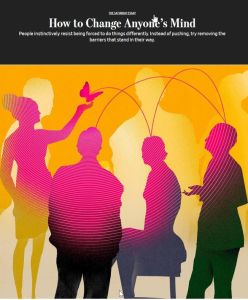
Article
How to Change Anyone’s Mind
People instinctively resist being forced to do things differently. Instead of pushing, try removing the barriers that stand in their way.
The Wall Street Journal,
2020
1×
Melden Sie sich an, um die Audiozusammenfassung anzuhören.
Recommendation
Persuading people to do your will can be challenging. Many people compulsively resort to stubbornness when they feel cajoled, sometimes even saying no in situations where they’d normally say yes. How, then, do you get someone to adopt your point of view? Marketing professor Jonah Berger dives into the heart of persuasion. His condensed set of tips offers a crash course in the gentle art of arm-twisting.
Summary
About the Author
Jonah Berger is a marketing professor at the University of Pennsylvania.














Comment on this summary